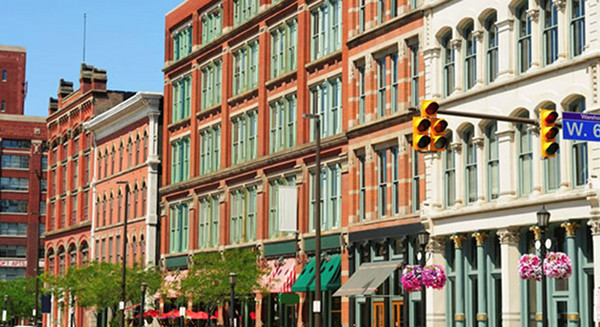Sure, old buildings can be drafty and inefficient, and were often constructed with no more knowledge of such newfangled green concepts as passive solar orientation than there were constructed with built-in hovercraft parking. But new buildings, no matter how painstakingly green, tend to have a significant carbon footprint, simply by virtue of the fact that they’re new. Now the jury has officially convened on the subject: according to a recent report from Preservation Green Lab of the National Trust for Historic Preservation, the green benefits of reusing old buildings outstrip those of building new ones.
The report, entitled The Greenest Building: Quantifying the Environmental Value of Building Reuse, has been said to provide the most comprehensive analysis of the potential environmental benefit of building reuse to date. Most notably, it concludes that, when comparing buildings of equivalent size and function, building reuse almost always offers environmental savings over demolition and new construction.

More specifically, the study finds that new green buildings can take between 10 and 80 years to overcome the negative energy and climate change impacts caused during their construction via increased energy savings (figuring the new building at an average of 30 percent more efficient than the old one). Amid all the feel-good happy-talk surrounding LEED and BREEAM certification for the latest, greatest green building that crosses our desk each day, that’s a sobering fact.
The report cautions, however, that there are environmental resources expended in rehabbing an older building, and these must be taken into account as well.
The report’s finding are based on a range of six building types in each of four climatically diverse cities across the US: Portland, Phoenix, Chicago and Atlanta. The six categories of building reuse comprised a single-family home; a multifamily building; a commercial office building; a mixed-use building in an “urban village”; an elementary school; and warehouse conversion. The study examined the role that geography, energy performance, electricity-grid mix, building type and building lifespan have on overall environmental performance.
The report’s key findings include that building reuse typically offers greater near-term environmental savings than demolition and new construction, and that widespread energy efficient retrofitting of existing buildings stands to provide more significant environmental benefits to cities than any green building spree. That’s a idea preservationists will no doubt get behind — and, hopefully, policy-makers, building owners, developers, architects and engineers too.